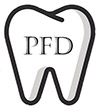
Malocclusion refers to teeth that are not in an ideal position, causing problems with the bite. A person may still be able to eat and chew without pain, but over time, malocclusion leads to uneven wear, which makes teeth vulnerable to further problems. Overbite, underbite, crossbite and crowded teeth are all forms of malocclusion.
The Causes of Malocclusion
Malocclusion is often hereditary, but there are other habits and conditions that can change jaw shape and structure.
- Cleft palate
- Pacifier use after age three
- Excessive bottle feeding and thumb sucking in early life
- Injuries and tumors in the jaw or mouth
- Impacted or misshapen teeth
- Poorly fitting braces, fillings or crowns
Symptoms of Malocclusion
The symptoms of malocclusion can vary depending on the severity of the condition and what is causing it. Typically, it presents as:
- Poor tooth alignment
- Changes in facial appearance
- Discomfort when biting down or chewing food
- Problems with speech, including lisping
- Mouth breathing
Treatment of Malocclusion
A malocclusion problem is diagnosed through a dental exam and x-rays. A mild malocclusion usually does not require treatment, but more severe forms of the condition may require a referral to an orthodontist. Treatment approaches include:
- Braces to straighten the teeth
- Extraction of teeth to relieve overcrowding
- Capping, bonding or reshaping the teeth
- A surgical procedure to change the shape of the jaw
- Plates and wires to make the jaw more stable
Since many cases of malocclusion are inherited, it is difficult to prevent. Parents can ensure proper jaw development by limiting bottle feeding and pacifier use. If the condition does occur, early diagnosis may reduce the length and cost of treatment and result in complete resolution of the problem.
